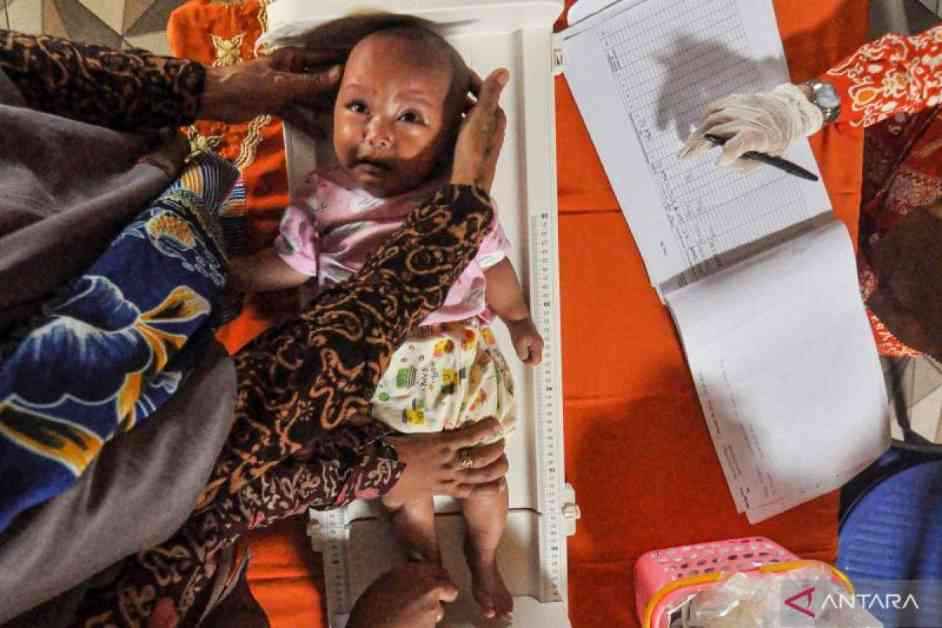Childhood Stunting Insights Revealed in Comprehensive Study
In a recent event, the SEAMEO Regional Center for Food and Nutrition (RECFON) and the Regional Nutrition Center of the University of Indonesia (PKGR UI) shared preliminary findings from the Action Against Stunting Hub (AASH) study in Indonesia. Led by Dr. Umi Fahmida, the study sheds light on various factors contributing to childhood stunting, offering valuable insights for stakeholders in combating this pressing issue.
Epigenetics, digestive tract health, infection, microbiota, and maternal mental health were identified as key factors beyond mere nutrition that play a role in stunting. Dr. Fahmida emphasized the importance of utilizing this data not only for scientific purposes but also as a foundation for policymaking, underscoring the urgency of addressing stunting comprehensively.
AASH, a groundbreaking interdisciplinary study conducted from 2019 to 2024, aimed to develop a stunting typology using a holistic approach that encompassed the entire well-being of a child. The study, spanning three countries including India, Indonesia, and Senegal, focused its Indonesian research efforts in East Lombok.
Insights on Child Development and Nutrition
The study comprised two primary components. First, a cohort of pregnant women was observed from pregnancy to when their children reached 24 months old, allowing researchers to track crucial factors influencing stunting. Second, an intervention study involving the introduction of eggs as a nutritional supplement during pregnancy aimed to assess the impact on epigenetics and stunting in infants, revealing valuable insights into the efficacy of food interventions.
Throughout the study period, extensive data collection efforts were undertaken, covering various aspects of child development and nutrition. From intake profiles and nutritional status to genetic and epigenetic factors, the study delved deep into the multifaceted nature of stunting. The comprehensive approach also included assessments of child development milestones, cognitive abilities, and early childhood learning environments, painting a detailed picture of the complex interplay of factors affecting stunting.
Implications for Policy and Interventions
The preliminary findings highlighted critical areas for intervention and policy development. For instance, the study revealed that mental health issues in mothers significantly impact child growth, emphasizing the need for comprehensive support systems that address both physical and mental well-being. Additionally, suboptimal stimulation in stunted children was found to impede motor development, underscoring the importance of early interventions to foster holistic growth.
Furthermore, the study shed light on the role of educators in child development, particularly the influence of qualified teachers on cognitive outcomes. The quality of teachers in early childhood education settings was identified as a crucial determinant of children’s readiness to learn, emphasizing the need for investments in professional development and support for educators across various educational platforms.
The study also highlighted the significance of nutritional interventions, pointing out the importance of selenium in child growth and the need for diverse protein sources to meet nutritional requirements effectively. By addressing deficiencies in key nutrients like iron, calcium, zinc, and folate through a balanced diet that includes a variety of animal proteins, interventions can target stunting at its roots.
In conclusion, the AASH study, funded by the United Kingdom Research and Innovation-Global Challenges Research Fund (UKRI-GCRF), represents a significant step forward in understanding childhood stunting from a comprehensive perspective. By unraveling the intricate web of factors influencing stunting, the study paves the way for targeted interventions and policy measures that can make a tangible impact on children’s health and well-being.
As the findings continue to inform ongoing efforts to combat childhood stunting, researchers and policymakers alike are poised to leverage this wealth of data to drive meaningful change in the fight against this pervasive issue. Through collaborative action and evidence-based interventions, the path towards a future free from childhood stunting grows clearer, offering hope for generations to come.






















